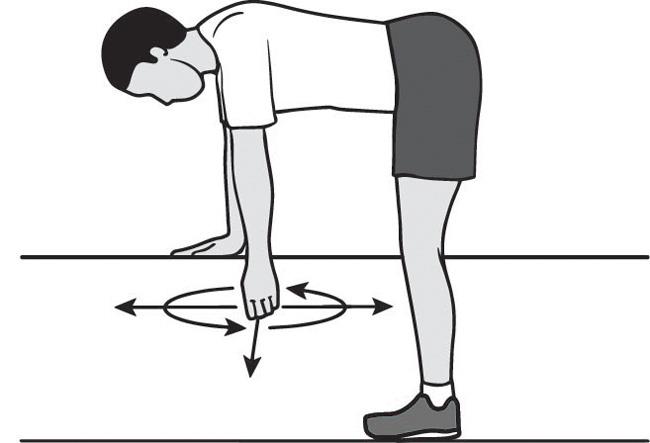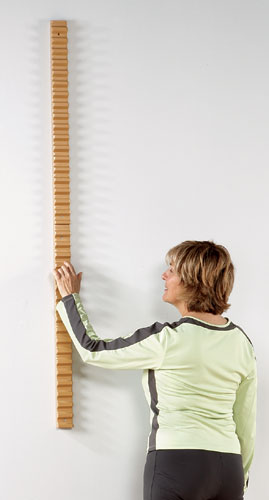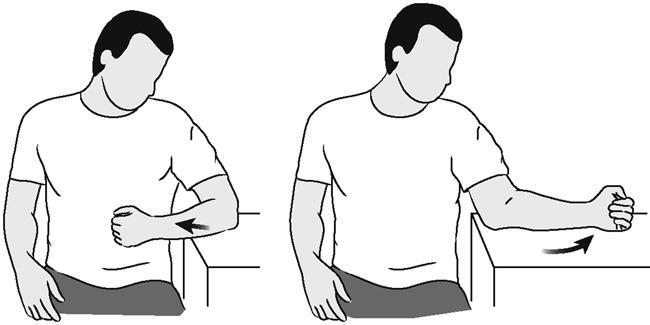frozen shoulder is mot common in patients 40 to 60 years of age. commonly higher incidence in females. "idiopathic" frozen shoulder has been associated with extended immobilization, relatively mild trauma (e.g., strain or contusion), and surgical trauma, especially breast or chest wall procedures. Shoulder movement decreasing despite physiotherapy in case of frozen shoulder is because of adhesive capsulitis is very progressive condition. if not treated proper it may increase and restricts all the range of motion in joints.
Adhesive capsulitis is associated with medical conditions such as diabetes, hyperthyroidism, ischemic heart disease, inflammatory arthritis, and cervical spondylosis. The most significant association is with insulin-dependent diabetes. The bilateral disease occurs in approximately 10% of patients but can be as high as 40% in patients with a history of insulin-dependent diabetes.
Stages of Frozen shoulder
first stage :
The first stage is the "freezing" phase, characterized by the onset of aching pain in the shoulder. The pain is usually more severe at night and with activities and may be associated with a sense of discomfort that radiates down the arm. This position represents the position of relaxed tension for the inflamed glenohumeral capsule, biceps, and rotator cuff’’
Second stage :
The second stage is the progressive stiffness or "frozen" phase. also, know as same. Pain at rest usually diminishes during this stage, leaving the patient with a shoulder that has restricted motion in all planes. Activities of daily living become severely restricted. Patients complain about their inability to reach into the back pocket, fasten the bra, comb the hair, or wash the opposite shoulder. Pain at night is a common complaint and is not easily treated with medications or physical modalities. This stage Duration is from 3 to 18 months.
Third or last stage :
the last stage is resolution or "thawing" phase. This stage is characterized by a slow recovery of motion. Aggressive treatment with physical therapy, closed manipulation, or surgical release may accelerate recovery, moving the patient from the frozen stage into the thawing phase, as long as ROM activities are practiced daily.
Frozen shoulder Physiotherapy treatment
How is Frozen Shoulder Diagnosed?
Frozen shoulder will be diagnosed within the clinic from your clinical signs and symptoms.
A clinical diagnosing of frozen shoulder will be determined by a radical shoulder examination. Your healer can raise concerning what physical activities you're having problem performing arts.
Common Shoulder issues include:
· Unable to succeed in higher than shoulder height
· Unable to throw a ball
· Unable to quickly reach for one thing
· Unable to succeed in behind your back eg undergarment or tuck shirt
· Unable to succeed in intent on your facet and behind. eg reach for safety belt
· Unable to sleep on your facet.
Frozen shoulder is usually misdiagnosed or confused with structure injury by inexperienced shoulder practitioners. it's vital to urge associate degree correct diagnosing. Your treatment arrange and recovery amount can vary significantly to alternative shoulder conditions like shoulder inflammatory disease or structure tears.
Risk issue for Frozen Shoulder
· shoulder trauma,
· surgery,
· polygenic disease,
· inflammatory conditions,
· inactivity of the shoulder,
· disease,
· cervical cancer, and
· hypo/hyperthyroidism.
· In part
The definitive treatment for adhesive capsulitis remains unclear although multiple interventions are studied. for many patients, enrolling in an exceedingly physiotherapy program is that the key to recovery. For the treatment of adhesive capsulitis, patient education is important in serving to to cut back frustration and encourage compliance. it's vital to emphasise that though the total vary of motion might ne'er be recovered, the condition can ad lib resolve and stiffness can greatly scale back with time.
Physiotherapy Treatment for Frozen Shoulder
1. initial part or first stage
Pain relief and also the exclusion of alternative potential causes of your frozen shoulder is that the focus throughout this part. Pain relief ought to be the main target of the initial part, conjointly called the painful, state change part. throughout now, any activities that cause pain ought to be avoided. terribly light shoulder mobilization, muscle releases, stylostixis, dry needling, and physiology tape recording for pain-relief will assist throughout this painful inflammation part. the appliance of a TENS machine was shown to cut back pain and increase vary of motion.
Modalities, like hot packs, will be applied before or throughout treatment. dampish heat utilized in conjunction with stretching will facilitate to enhance muscle extensibility and vary of motion by reducing muscle consistence and contractile organ mediate relaxation.
2. Second Phase: diminished vary of Movement
Gentle and specific enarthrosis mobilization and stretches, muscle unleash techniques, stylostixis, dry needling, and exercises to regain your vary and strength ar used for a prompt come back to perform. Care should be taken to not introduce any exercises that ar too aggressive. particularly, mobilization with movement (MWM) techniques seems the foremost effective and simpler than stretching exercises alone. MWM's ar specific-techniques performed by suitably-trained shoulder physiotherapists.
3. Third Phase: Resolution
Provide you with exercise progressions together with strengthening exercises to manage associate degreed maintain an inflated vary of movement. physiatrics is best throughout this thawing part. Progressed primarily by increasing stretch frequency and period, while maintaining an equivalent intensity, as tolerated by the patient. The stretch will be command for extended periods and also the sessions per day will be inflated. because the patient’s irritability level reduces, additional intense stretching and exercises employing a device, like a simple machine, will be performed to influence tissue transforming.
Your healer might embrace,
Specific physiatrics exercises for shoulder pain designed to stretch the affected joint capsule
Massage
Joint Mobilisations
Electrotherapy
Thermotherapy
Advice on pain relief and ways to cut back day to day painExercise and Stretch you'll be able to perform reception ar listed below, however we have a tendency to advise to perform such exercise beneath Physio observation.
Your physiotherapist may include,
- Specific physiotherapy exercises for shoulder pain designed to stretch the affected joint capsule
- Massage
- Joint Mobilisations
- Electrotherapy
- Thermotherapy
- Advice on pain relief and methods to reduce day to day pain
Exercise and Stretch You can perform at home are listed below, but we advise to perform such exercise under Physio observation.
1. Pendulum Exercise for Shoulder:
Do this exercise first.

Let your shoulders relax. Stand and
lean slightly forward, allowing the hanging of the affected neck. Swing the arm in
a small circle-about a diameter foot. Do 10 revolutions, once a day, in each
direction. As your symptoms improve, your swing will increase in diameter but
never force it. When carrying a lightweight (three to five pounds) in the
swinging arm, you maximize the stretch when you are ready for more.
2.Towel stretch
Hold one end behind your back of a three-foot towel, and
grab the opposite end with your other hand. Hold that towel horizontally.

To
extend it, use your good arm to move the compromised arm upwards. The improved
form of this exercise can also be performed with the towel draped over your
good shoulder. Keep the towel underneath with the affected arm and drag it with
the lower back
3.Finger ladder

Face a three-fourths wall away from an arm's length. At
waist level, reach out and touch the wall with the affected arm's fingertips.
Walk your fingers up the wall slowly, spider-like, with your elbow slightly
bent, until you have raised your arm as far as you can comfortably. Your
fingers, not your shoulder muscles, should be doing the work. Lower your arm
slowly (helped by the good arm, if needed)
4.Cross Arm stretch
Stand or sit. Use your good arm to lift your affected arm to
the elbow, and bring it up and across your body, exerting gentle pressure to
stretch your shoulder. Hold the stretch for 15-20 seconds. Do this 10-20 times a
day.
Please note that as the motion range increases, add the
rotator cuff to strengthen the exercises. Make sure to warm up your shoulder
and do your stretching exercises before you conduct exercises that improve.
5.External Rotation
Place a rubber resistance band sometimes also called a resistance band, with
your elbows between your legs, at an angle of 90 degrees to your arms. Rotate
two to three inches outward into the lower part of the affected arm and place
for five seconds. Repeat once a day, 10 to 15 times.

6.Internal Rotation
Stand by a closed door and hook around the doorknob one end
of a rubber exercise band. Hold the other end of the affected arm with the
hand, holding your elbow at an angle of 90 degrees. Pull the band in two or
three inches towards your body and hold for five seconds. Repeat once a day,
10-15 times.



Thank you very much for drawing my notice to this. Your blog is jam-packed with useful facts. Until I read that, I would have no idea. I'll come back for more fantastic material. Best wishes, and good luck.
ReplyDelete-Sports Massage In Croydon
Welcome to ARTC Health, where a commitment to holistic well-being extends to every joint in the body, including the crucial knees. In this introductory guide, we explore the fundamentals of knee wellness, providing insights and strategies to optimize knee health. From preventive measures to personalized exercise regimens, discover how ARTC Health empowers individuals to embrace knee wellness as a cornerstone of their overall health.
ReplyDeleteExplore Knee Wellness at ARTC Health: ARTC Health - Knee Wellness